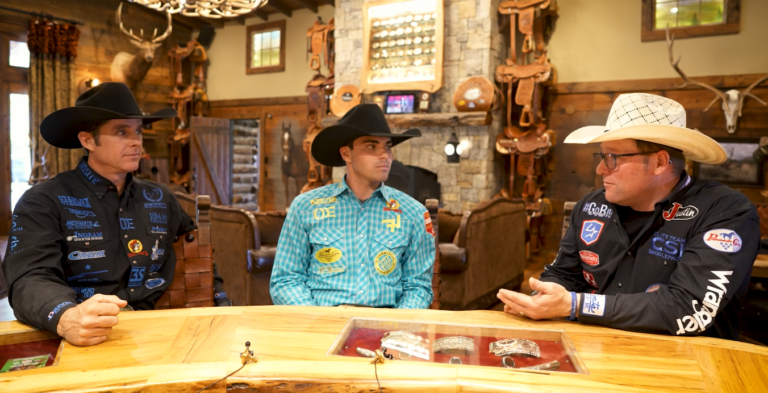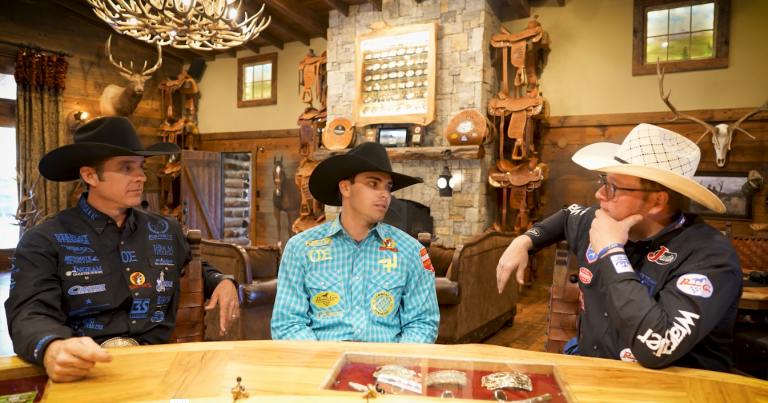I like a horse that’s got good slide to him. A horse that drags with his back end and pedals with his front end makes it easy for me to finish my delivery. A horse that has a real abrupt stop causes too much separation too quickly and can cause lost legs, missed dallies and, for me, it makes it really hard to stay with my delivery and put my bottom strand all the way down. I don’t want a hard stop—that’s not easy to heel on. I want a good stop, sliding and pedaling, so the separation happens slower.
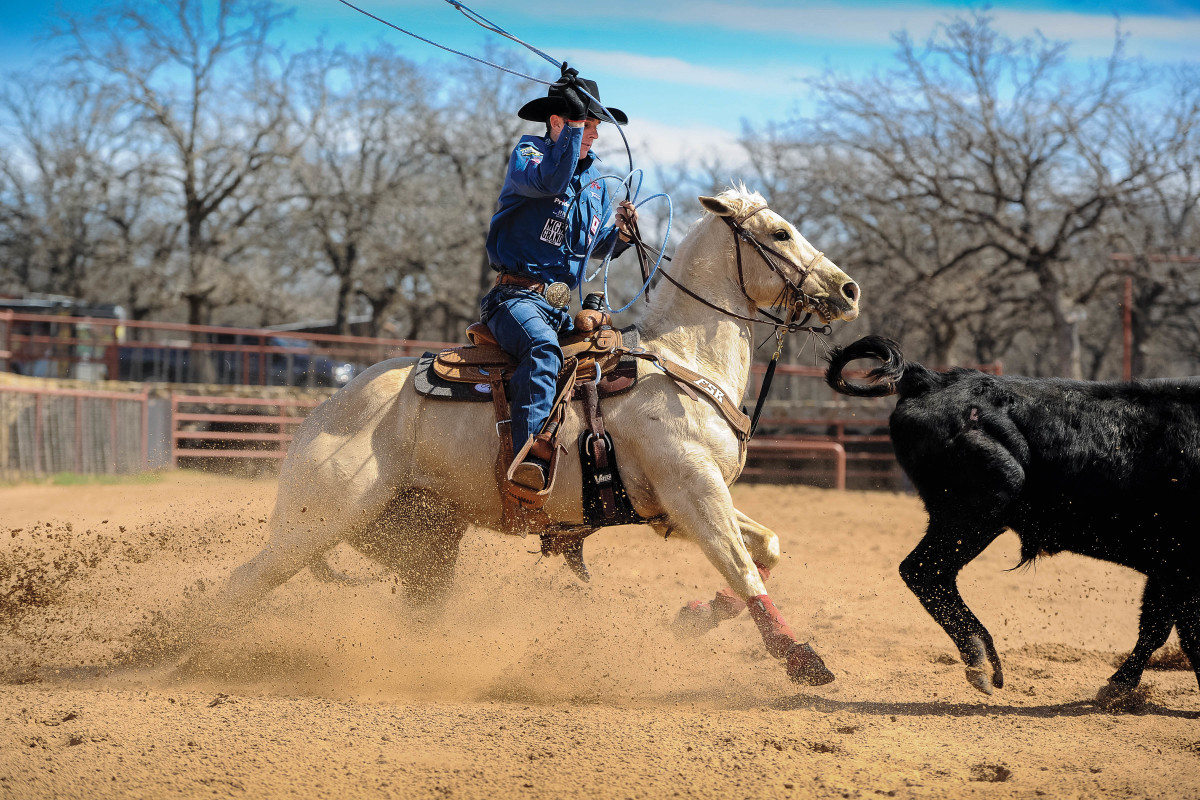
You’ll notice I have separation, which is the first key to a good stop. If you have your horse cutting the corner or really tight on the steer, they can’t have much stop to them because there’s no momentum on the corner. For several reasons, I like to keep distance. Number one, so I can keep sight of my target. Number two, so I can use that momentum to push my horse around the corner and toward my target. A horse needs some forward momentum to drag with his back end and pedal with his front end.
LISTEN:
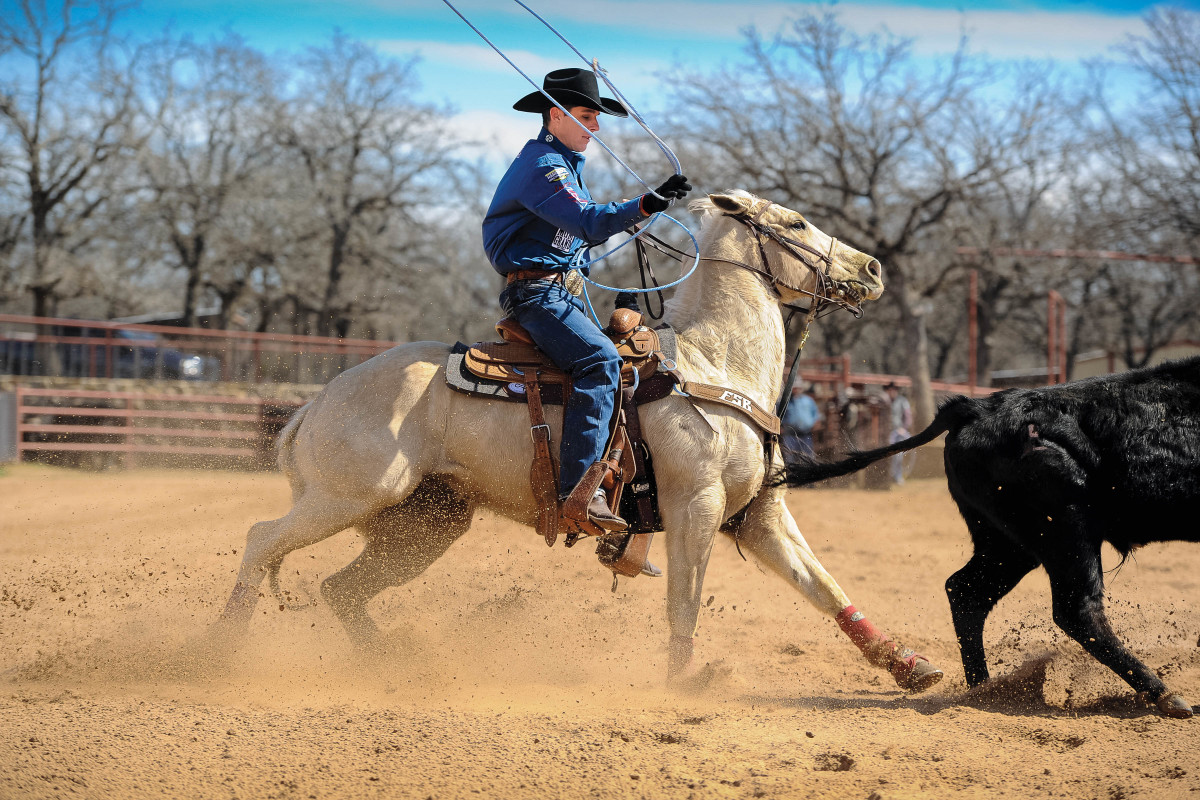
You’ll notice my horse’s head is coming up and his front feet are still moving. His back left leg is starting to get in the ground a little bit. I spend a lot of time with my horses on the Time Machine to develop this. Step one is distance so you can have forward momentum. Next, I don’t always stop my horse and make him take a jerk in the practice pen. Instead, when he wants to stop, I squeeze him with my legs and make him keep those front feet moving and just pull my slack. That teaches a horse that just because you’re delivering doesn’t mean they have to stop and take a jerk. They’re front feet have to be forgiving and move if you need them to. So, when they’ve got forward momentum as they begin to stop with their back end, and you squeeze with your legs and ask for more they begin to slide with their back end and pedal with their front end. It can take a lot of slow practice.
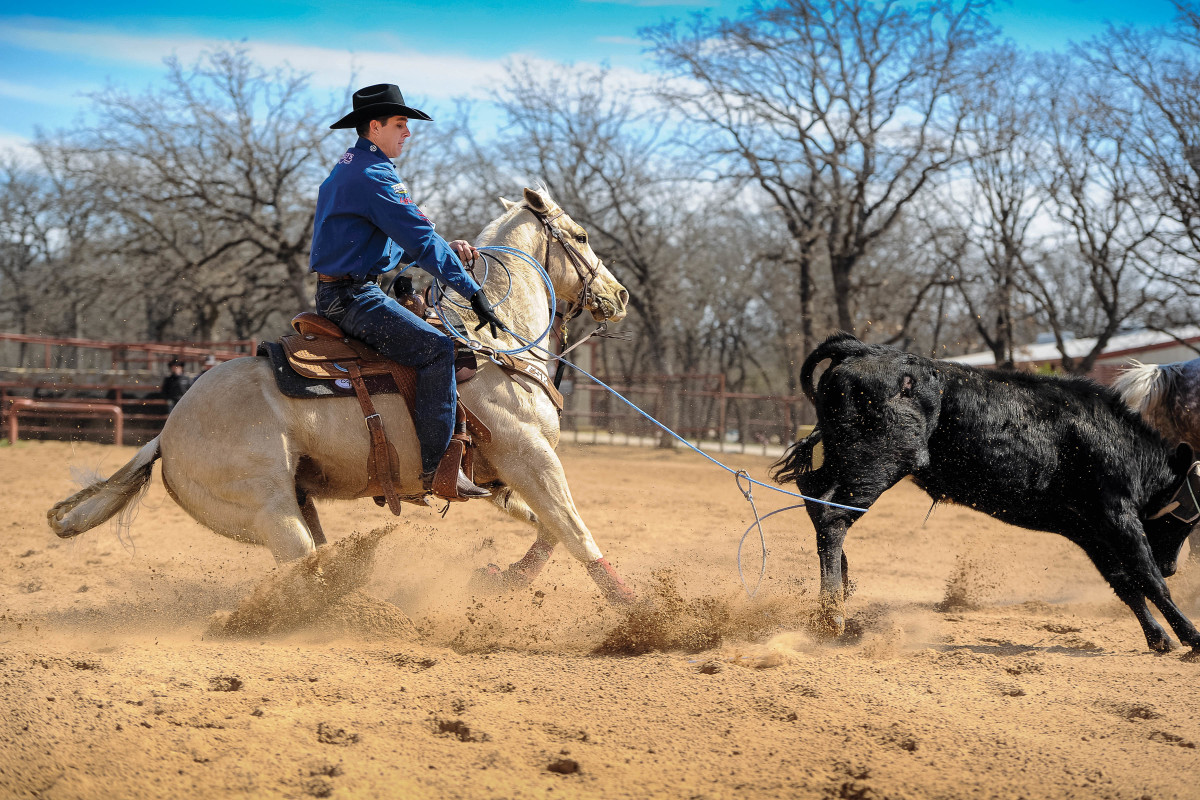
The horse is able to position himself to drag because both of his hind feet are underneath him. Notice his front feet. When a lot of horses want to stop, both their front feet are side-by-side and that gives you that rough, abrupt stop we talked about. Since this horse is sliding, I can keep my hand and arm down, which lets me be really deliberate and cover as much area as I can with my loop. The slide just makes that easier because I’m not having to hurry back to the horn because my separation from the steer hasn’t started yet.
READ MORE:
I don’t use any special shoeing on my horses. It’s not that I don’t think sliders don’t help a horse that doesn’t want to use his back end, I just think it has more to do with how you train these horses to use their back end. What’s really cool about it is when horses learn to do this, they really do like it better. It teaches them to stop correctly and take the jerk correctly and they don’t dread it. Rather than dread the jerk, they’re set up to take it and can usually finish faster and stronger.
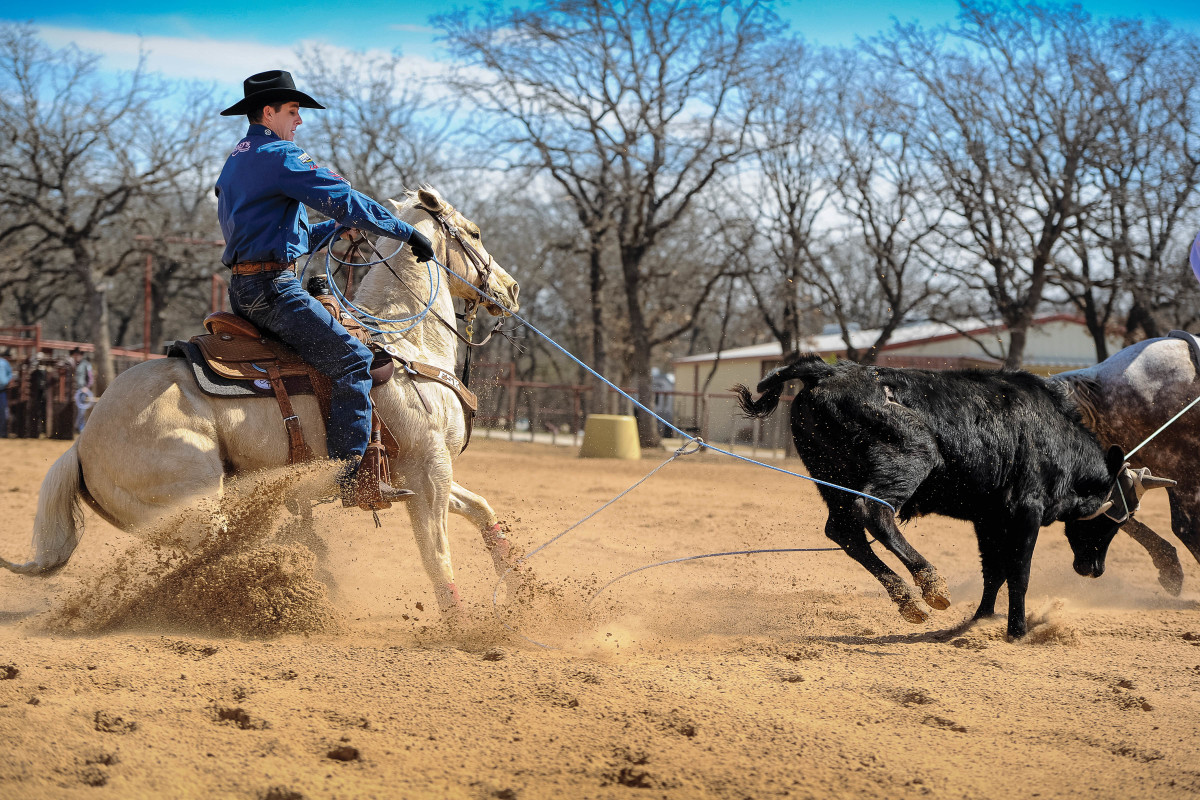
Now my loop is completely finished and my horse is still sliding with his back end. Notice his front feet, they’re still moving. Also, the separation is beginning, which is what we want. This makes it very easy for me to lift my slack and lift my reins and finish the run without too much separation and my horse is set up to take the jerk.
LISTEN:
The Score: Building a Blueprint for Mental Toughness with Patrick Smith
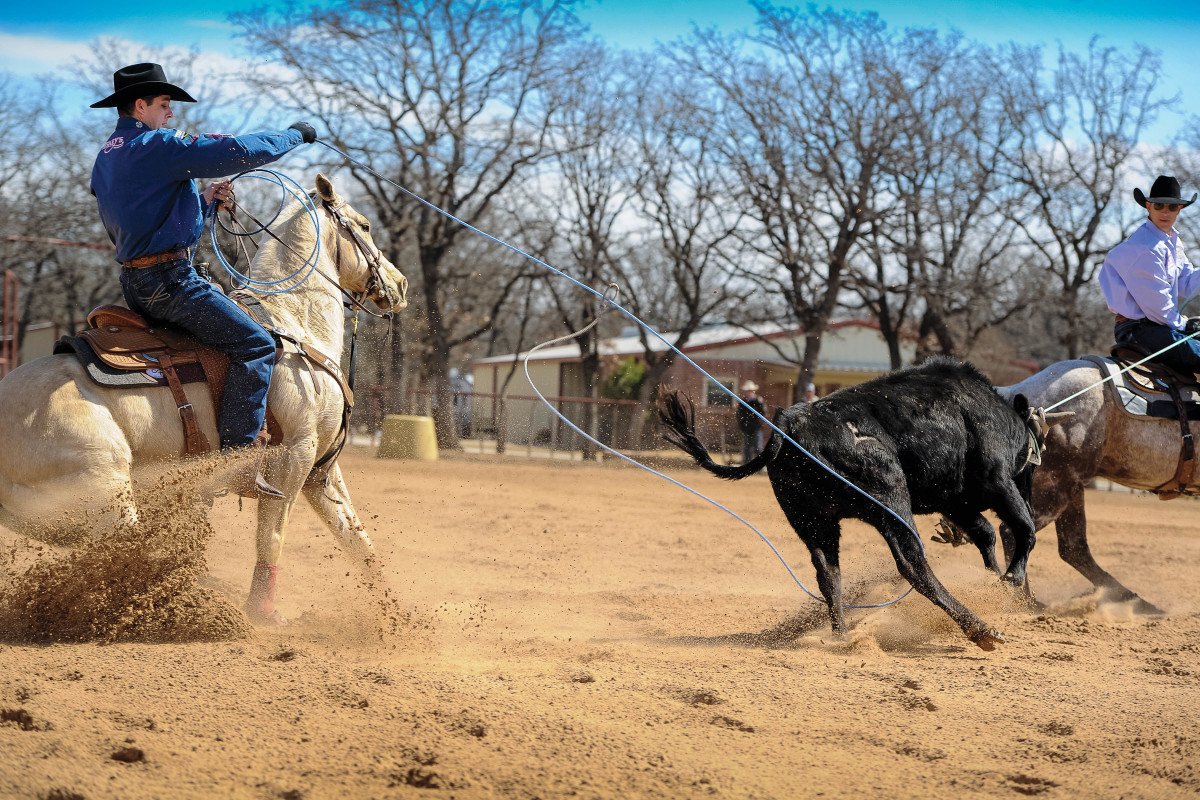
I’m getting my slack, my horse’s back end is even more underneath him and you can see the distance increasing between me and the steer. My loop is coming up and it’s up high above the steer’s back and you’ll notice how square my horse is. I’m able to see my target clearly still. It just makes for an easier stop. Its’ very important that we use our horses as tools to help us win. By showing them the correct way to do it, it makes it easier on us and easier on them.
READ MORE:
12 Things Anyone Can Master to Become a Better Roper with Patrick Smith





